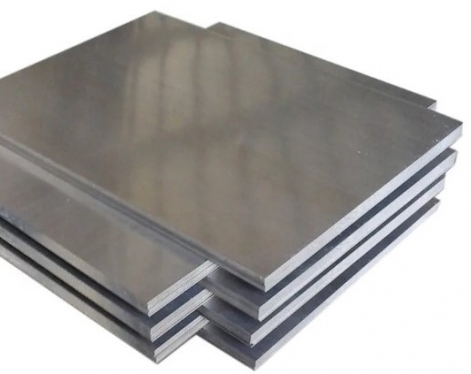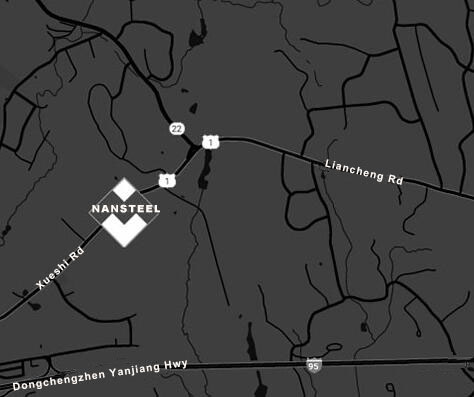Mild steel plate, also known as low carbon steel plate, is one of the most widely used steel products in construction, machinery, shipbuilding, and general engineering. Its popularity comes from a good balance of strength, weldability, and affordability. To meet diverse applications, mild steel plates are produced under various international specifications and in a wide range of dimensions.
Common specifications
The main standards for mild steel plates cover different global markets, each designed to meet local industry requirements: ASTM A36 (USA), EN 10025 S275 (Europe), IS 2062 (India), and JIS G3101 SS400 (Japan). These standards do more than provide guidelines—they create uniformity by defining limits on chemical composition (such as carbon content for better weldability), setting mechanical property ranges (strength and ductility), and requiring quality checks like tensile and bend tests.
Take ASTM A36 as an example. Widely used across North America, it offers a minimum yield strength of 250 MPa, making it a dependable choice for structural applications. From bridge beams to building frames and storage tanks, its strength and consistency ensure safety where load-bearing capacity is critical.
In Europe, EN 10025 S275 is a common option, especially in projects that involve a lot of welding, such as industrial frameworks or infrastructure works. Its stable performance in welded joints reduces the risk of weak spots, which aligns well with European engineering’s emphasis on long-term durability.
IS 2062 caters to India’s fast-growing construction and manufacturing sectors, while JIS G3101 SS400 in Japan is valued for its versatility, finding use in prefabricated structures, machinery components, and general engineering applications.
Dimensions
Mild steel plates cover a flexible spectrum of dimensions to fit diverse industrial needs, with core ranges that balance versatility and functionality. Thickness typically spans from 3 mm (ideal for lightweight, low-load applications) up to 150 mm (engineered for heavy-duty stress resistance), while widths generally fall between 1,000 mm and 3,000 mm--wide enough to minimize joint work in large structures, yet manageable for standard processing. Lengths can extend up to 12,000 mm, though most suppliers keep 6,000 mm × 2,000 mm sheets in regular stock: this size strikes a sweet spot, being easy to store, transport, and cut down for common projects, saving time for buyers who don’t need custom dimensions.
The choice of thickness always ties back to end use. Thinner plates (often 3–10 mm) are a staple for automotive body panels, electrical enclosures, or decorative metalwork--their light weight and malleability make them easy to shape without sacrificing basic strength. Thicker plates (30 mm and above), by contrast, are built for high-stress scenarios: they’re used in heavy equipment frames, pressure vessels for oil/gas, or structural supports in industrial buildings, where their ability to bear heavy loads and resist deformation is non-negotiable. For projects that fall outside standard sizes (like extra-wide plates for large storage tanks), manufacturers offer cut-to-order services, ensuring the plate fits the exact design without excess material waste.

Special specifications customization
In actual industrial production and engineering projects, standard common specifications and sizes sometimes cannot meet specific needs. In such cases, custom-made mild steel plates with special specifications can be considered. For example, in the creation of artistic sculptures, mild steel plates with unique shapes and sizes may be required to realize the artist's creativity. In the manufacture of certain specialized equipment, non-standard mild steel plates may also be required to ensure accurate installation and operation.
The customization process is not complicated. First, customers must provide detailed and accurate drawings based on their needs, clearly indicating the dimensions, shape requirements, and special processing requirements of the desired mild steel plate. Afterwards, in-depth communication will be conducted with a professional mild steel plate manufacturer. The manufacturer will uate the feasibility of production based on the customer's drawings and requirements and provide a corresponding production plan and quotation. Regarding processing details, customers need to clarify with the manufacturer issues such as cutting accuracy and edge treatment methods. For example, for applications requiring extremely high edge flatness, the manufacturer should be informed in advance to perform a fine grinding process. At the same time, during the customization process, close attention should be paid to production progress, and any issues should be promptly communicated and resolved to ensure that the final product meets the required specifications.
Read more: Application Areas of Mild Steel Plate
Common specifications
The main standards for mild steel plates cover different global markets, each designed to meet local industry requirements: ASTM A36 (USA), EN 10025 S275 (Europe), IS 2062 (India), and JIS G3101 SS400 (Japan). These standards do more than provide guidelines—they create uniformity by defining limits on chemical composition (such as carbon content for better weldability), setting mechanical property ranges (strength and ductility), and requiring quality checks like tensile and bend tests.
Take ASTM A36 as an example. Widely used across North America, it offers a minimum yield strength of 250 MPa, making it a dependable choice for structural applications. From bridge beams to building frames and storage tanks, its strength and consistency ensure safety where load-bearing capacity is critical.
In Europe, EN 10025 S275 is a common option, especially in projects that involve a lot of welding, such as industrial frameworks or infrastructure works. Its stable performance in welded joints reduces the risk of weak spots, which aligns well with European engineering’s emphasis on long-term durability.
IS 2062 caters to India’s fast-growing construction and manufacturing sectors, while JIS G3101 SS400 in Japan is valued for its versatility, finding use in prefabricated structures, machinery components, and general engineering applications.
Dimensions
| Thickness (mm) | Common Widths (mm) | Common Lengths (mm) | Example Application |
| 3 – 12 | 1,000 – 1,500 | 2,000 – 6,000 | Roofing, automotive panels |
| 12 – 40 | 1,500 – 2,500 | 6,000 – 12,000 | Structural beams, bridges |
| 40 – 100 | 2,000 – 3,000 | 6,000 – 12,000 | Heavy machinery, shipbuilding |
| 100 – 150 | 2,000 – 3,000 | 6,000 – 12,000 | Pressure vessels, industrial bases |
Mild steel plates cover a flexible spectrum of dimensions to fit diverse industrial needs, with core ranges that balance versatility and functionality. Thickness typically spans from 3 mm (ideal for lightweight, low-load applications) up to 150 mm (engineered for heavy-duty stress resistance), while widths generally fall between 1,000 mm and 3,000 mm--wide enough to minimize joint work in large structures, yet manageable for standard processing. Lengths can extend up to 12,000 mm, though most suppliers keep 6,000 mm × 2,000 mm sheets in regular stock: this size strikes a sweet spot, being easy to store, transport, and cut down for common projects, saving time for buyers who don’t need custom dimensions.
The choice of thickness always ties back to end use. Thinner plates (often 3–10 mm) are a staple for automotive body panels, electrical enclosures, or decorative metalwork--their light weight and malleability make them easy to shape without sacrificing basic strength. Thicker plates (30 mm and above), by contrast, are built for high-stress scenarios: they’re used in heavy equipment frames, pressure vessels for oil/gas, or structural supports in industrial buildings, where their ability to bear heavy loads and resist deformation is non-negotiable. For projects that fall outside standard sizes (like extra-wide plates for large storage tanks), manufacturers offer cut-to-order services, ensuring the plate fits the exact design without excess material waste.

Special specifications customization
In actual industrial production and engineering projects, standard common specifications and sizes sometimes cannot meet specific needs. In such cases, custom-made mild steel plates with special specifications can be considered. For example, in the creation of artistic sculptures, mild steel plates with unique shapes and sizes may be required to realize the artist's creativity. In the manufacture of certain specialized equipment, non-standard mild steel plates may also be required to ensure accurate installation and operation.
The customization process is not complicated. First, customers must provide detailed and accurate drawings based on their needs, clearly indicating the dimensions, shape requirements, and special processing requirements of the desired mild steel plate. Afterwards, in-depth communication will be conducted with a professional mild steel plate manufacturer. The manufacturer will uate the feasibility of production based on the customer's drawings and requirements and provide a corresponding production plan and quotation. Regarding processing details, customers need to clarify with the manufacturer issues such as cutting accuracy and edge treatment methods. For example, for applications requiring extremely high edge flatness, the manufacturer should be informed in advance to perform a fine grinding process. At the same time, during the customization process, close attention should be paid to production progress, and any issues should be promptly communicated and resolved to ensure that the final product meets the required specifications.
Read more: Application Areas of Mild Steel Plate









